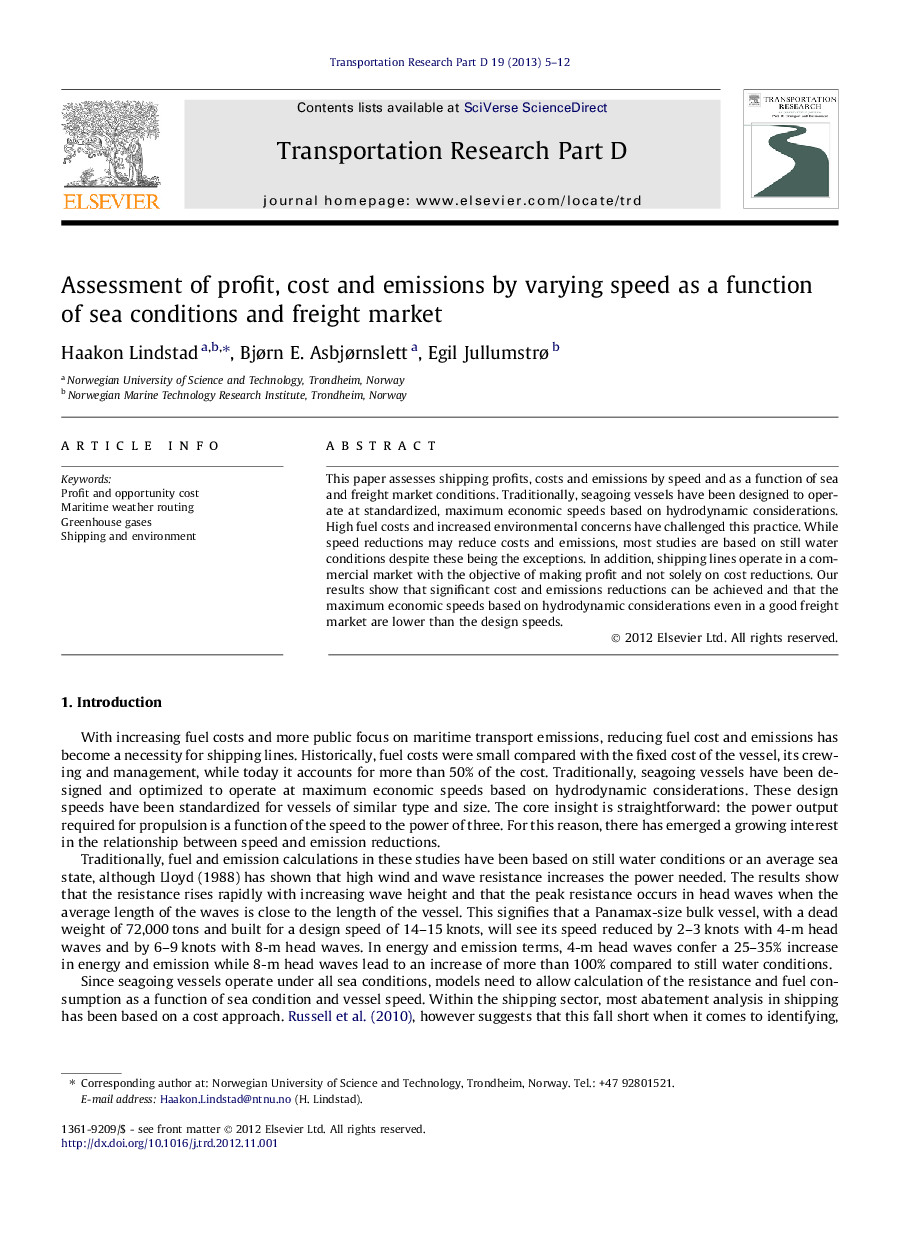| Article ID | Journal | Published Year | Pages | File Type |
|---|---|---|---|---|
| 1065921 | Transportation Research Part D: Transport and Environment | 2013 | 8 Pages |
This paper assesses shipping profits, costs and emissions by speed and as a function of sea and freight market conditions. Traditionally, seagoing vessels have been designed to operate at standardized, maximum economic speeds based on hydrodynamic considerations. High fuel costs and increased environmental concerns have challenged this practice. While speed reductions may reduce costs and emissions, most studies are based on still water conditions despite these being the exceptions. In addition, shipping lines operate in a commercial market with the objective of making profit and not solely on cost reductions. Our results show that significant cost and emissions reductions can be achieved and that the maximum economic speeds based on hydrodynamic considerations even in a good freight market are lower than the design speeds.
► Profit, cost and emissions at various vessel speeds are treated as a function of sea conditions and markets. ► Our model assesses for all combinations of vessel speed and sea conditions. ► The model in combination with weather data enables weather routings with gives cost and emission reductions.
